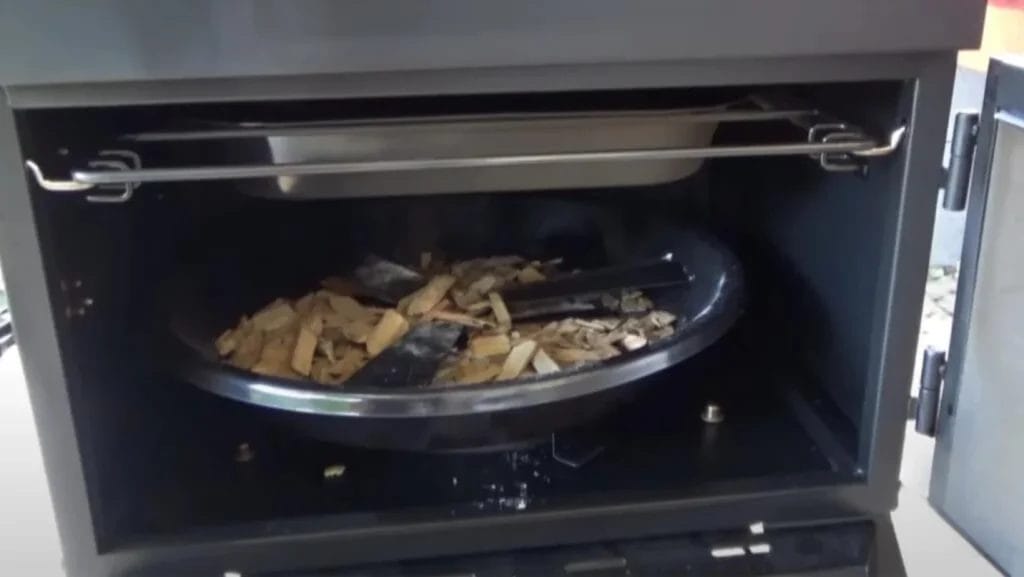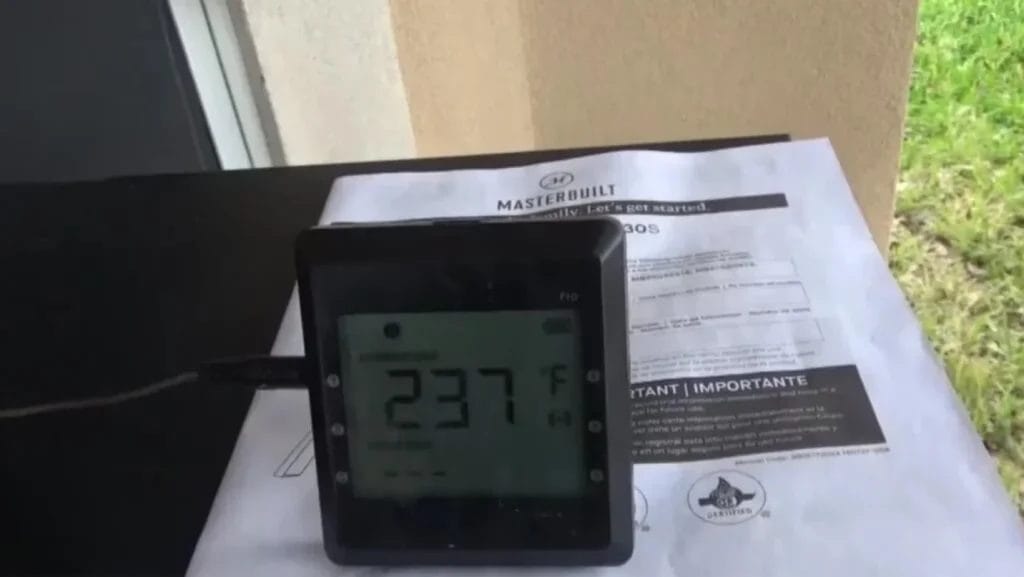How to Use a Propane Smoker
Smoking meat is a time-honored tradition that has been practiced for centuries. While traditional smoking methods can be labor-intensive, requiring constant monitoring and tending to a fire, modern propane smokers offer a more convenient and efficient way to smoke meat. In this article, we’ll guide you through the steps of using a propane smoker to achieve perfectly smoked meat every time.
So, whether you’re a seasoned pro or a beginner, read on to discover how to use a propane smoker like a true pitmaster!
What is a Propane Smoker?
A propane smoker is an outdoor cooking appliance that uses propane gas as a fuel source to generate heat and smoke. The propane is burned in a heating element, which produces smoke that flavors and cooks the meat. Propane smokers come in two main styles: vertical and cabinet-style.
Vertical propane smokers: are tall and narrow, with the heating element at the bottom and the meat racks stacked on top. Cabinet-style propane smokers: are wider and have the heating element at the back, with the meat racks arranged horizontally. Both styles offer ample space to smoke large cuts of meat like brisket, pork shoulder, or whole chickens.
Steps to Use a Propane Smoker
Using a propane smoker is a straight-forward process, but there are a few key steps to follow to achieve the best results. Here’s a step-by-step guide for using it:

Step 1: Assembly
Before using your propane smoker, you’ll need to assemble it according to the manufacturer’s instructions. This will typically involve attaching the legs, installing the gas line and regulator, and seasoning the smoker. Seasoning a smoker involves heating it up to a high temperature for an extended period to burn off any residues or chemicals from the manufacturing process.
Step 2: Preheat
Once your propane smoker is assembled and seasoned, it’s time to preheat it. Turn the temperature control knob to the desired temperature and let it to heat up for about 10 to 15 minutes with the door closed. This will ensure that the smoker is at the correct temperature before you add your meat.
Step 3: Prepare the Meat
While the smoker is heated up, it’s time to prepare your meat. Trim off any excess fat or connective tissue, and season it with your favorite rub or marinade. This is an essential step to flavor your meat and create a delicious crust on the surface.
Step 4: Load the Smoker
Once the smoker has reached the desired temperature, it’s time to load it up with your meat. Arrange the meat on the racks, leaving space between each piece for smoke and heat circulation. Be sure not to overcrowd the smoker, as this can impede airflow and result in uneven cooking.
Step 5: Monitor the Temperature
It’s essential to monitor the temperature inside the smoker throughout the cooking process. Use a meat thermometer to check the internal temperature of the meat and adjust the temperature control knob as needed to maintain a consistent temperature. The ideal temperature range for smoking meat is between 200 and 250 degrees Fahrenheit.
Step 6: Add Wood Chips
To generate smoke and infuse your meat with flavor, you’ll need to add wood chips to the smoker. Soak the wood chips in water for at least 30 minutes before using them to prevent them from burning too quickly. Once soaked, add the wood chips to the smoker according to the manufacturer’s instructions. You can experiment with different types of wood chips to achieve different flavors, such as hickory, apple, or mesquite.
Step 7: Check the Meat
After a few hours of smoking, it’s time to check the meat for doneness. Use a meat thermometer to check the internal temperature of the meat. The safe internal temperature for most types of meat is 165 degrees Fahrenheit, but some cuts like brisket or pork shoulder may require a higher internal temperature. Once the meat has reached the desired temperature, remove it from the smoker and let it rest for 10 to 15 minutes before slicing and serving.
Tips for Using a Propane Smoker
Here are some additional tips to help you get the most out of your propane smoker:
- Use a drip pan to catch any drippings from the meat, as this can prevent flare-ups and keep the smoker clean.
- Don’t open the smoker door too often, as this can cause heat and smoke to escape and result in uneven cooking.
- Experiment with different rubs and marinades to create unique flavor profiles for your smoked meat.
- Use a remote meat thermometer to monitor the internal temperature of the meat without opening the smoker door.
- Clean your propane smoker regularly to ensure it functions properly and lasts for many years.

The Advantages of Using a Propane Smoker
There are several advantages to using a propane smoker over other types of traditional smokers. Here are a few of them:
- Convenience: very easy to use and require minimal preparation. They don’t require the same level of monitoring and maintenance as other types of smokers, such as charcoal or wood smokers.
- Temperature control: allow you to easily control the temperature, which is important for achieving consistent results. Most propane smokers have a built-in temperature gauge that allows you to monitor the temperature and make adjustments as needed.
- Quick heat-up time: typically heat up much faster than other types of smokers, which means you can start smoking your meat sooner.
- Very efficient: using less fuel than traditional smokers and producing less ash and debris. This makes them a great option for those who want to smoke meat regularly but don’t have the time or energy to tend to a traditional smoker.
- Versatility: can be used to smoke a wide variety of meats, including beef, pork, chicken, fish, and even vegetables. You can also experiment with different types of wood chips to create unique flavor profiles.
- No mess: Unlike charcoal or wood smokers, propane smokers don’t produce ash or charcoal dust, which can be messy and difficult to clean up.
check out our article on using the Masterbuilt propane smoker for expert tips and tricks.

Troubleshooting Common Issues with Propane Smokers
While propane smokers are generally easy to use, there are a few common issues that can arise. Here are some tips for troubleshooting these issues:
- Uneven cooking: If your meat is cooking unevenly, try rotating it halfway through the smoking process. You can also try adjusting the temperature or adding more wood chips to the smoker.
- Flameouts: If the flame goes out, it may be due to a low propane tank or a malfunctioning regulator. Try replacing the propane tank or regulator to see if that fixes the issue.
- Excessive smoke: If you’re experiencing excessive smoke, it may be due to using too many wood chips or using chips that haven’t been properly soaked. Try reducing the amount of wood chips you’re using and make sure they’re fully soaked before adding them to the smoker.
Cleaning and Maintaining Your Propane Smoker
To ensure your propane smoker lasts for many years, it’s important to clean and maintain it regularly. Here are some tips for cleaning and maintaining your propane smoker:
- Clean the grates and interior of the smoker after each use using a wire brush and mild soap and water.
- Empty the grease tray and drip pan after each use to prevent buildup and potential fire hazards.
- Replace the propane tank as needed and check for leaks before using the smoker.
- Store in a dry, covered area when not in use to prevent rust and damage.
By following these tips and best practices, you can enjoy delicious, perfectly smoked meat every time you use your propane smoker. Whether you’re a seasoned pro or a beginner, a propane smoker is a great investment for any outdoor cooking enthusiast.
“When it comes to choosing a propane smoker, there are many options available on the market today. If you’re in the market for a new propane smoker, check out our article on the “Top-rated Propane Smokers ” for our top picks and in-depth reviews. Our recommendations take into account factors like size, temperature control, durability, and overall value to help you find the perfect propane smoker for your needs. Once you have your new smoker, be sure to follow the tips and tricks outlined in this article to get the most out of your investment.”

Conclusion
Using a propane smoker is a convenient and efficient way to smoke meat and achieve delicious, smoky flavor. By following the steps outlined in this article and following some tips, you can produce perfectly smoked meat every time. Whether you’re a seasoned pit-master or a beginner, a propane smoker is an excellent tool to have in your outdoor cooking arsenal.
FAQs
What kind of propane tank do I need for a propane smoker?
- You’ll need a standard 20-pound propane tank, which can be purchased at most hardware or home improvement stores.
How often do I need to add wood chips to the propane smoker?
- It depends on the smoker and the type of wood chips you’re using. Generally, you’ll need to add wood chips every 30 to 60 minutes.
Can I use a propane smoker indoors?
- No, propane smokers should only be used outdoors in a well-ventilated area.
How long does it take to smoke meat in a propane smoker?
- It depends on the type of meat and the size of the cut. Generally, smoking meat can take anywhere from 4 to 12 hours.
Can I smoke vegetables in a propane smoker?
- Yes, you can smoke vegetables in a propane smoker. Just be sure to use a low temperature and monitor them closely to prevent overcooking.

